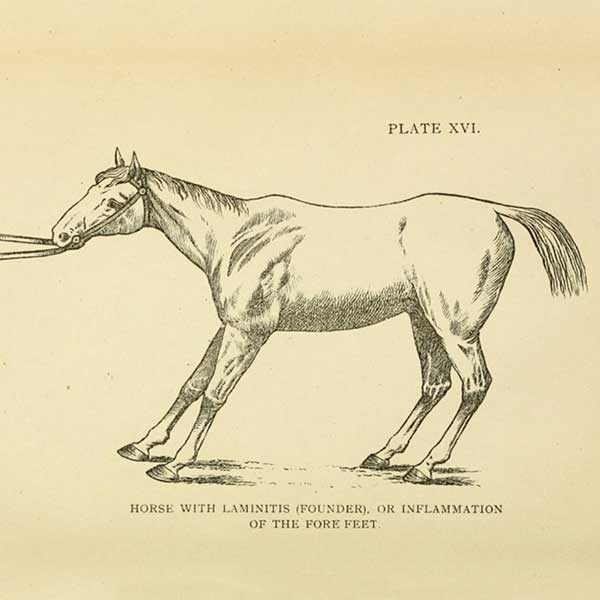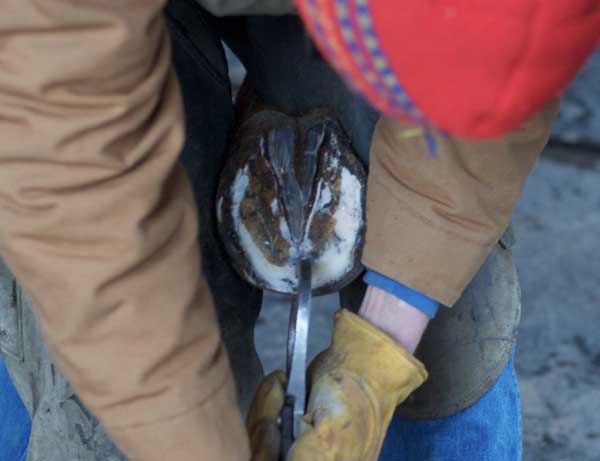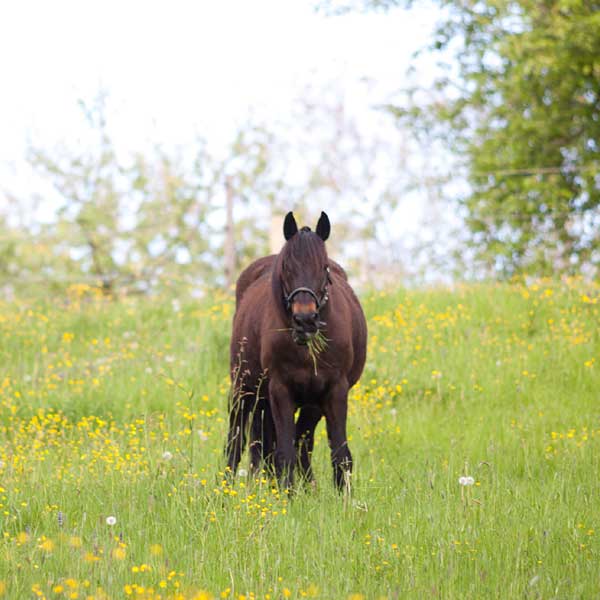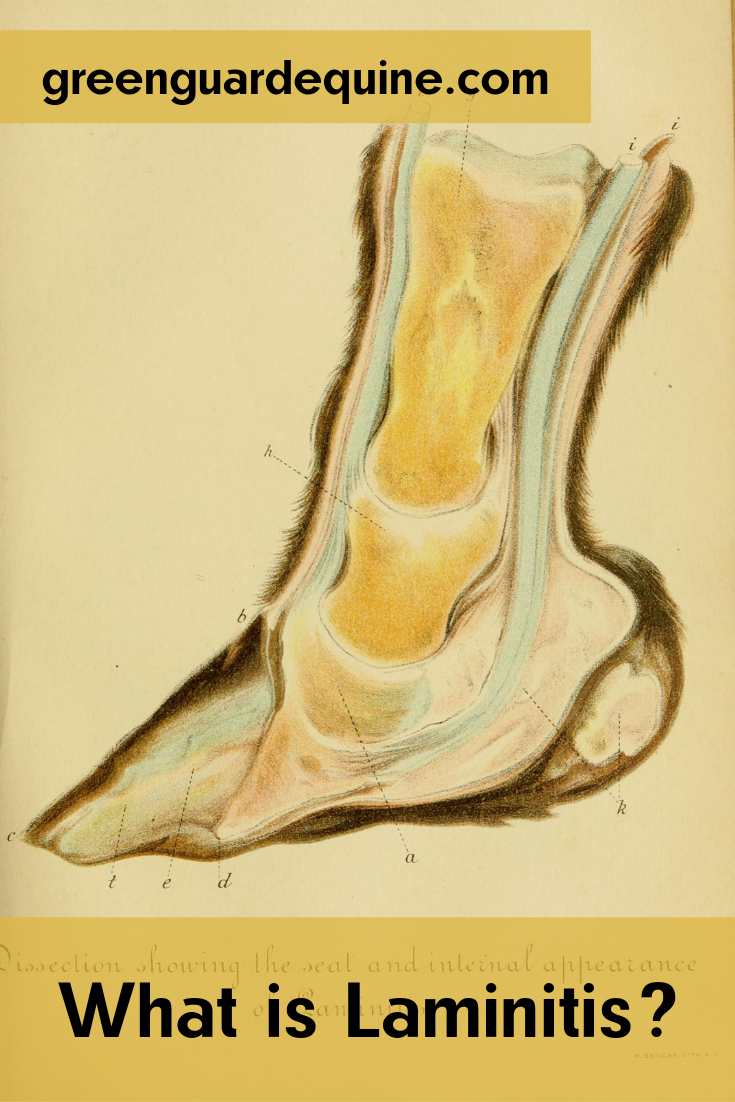Before we begin, our entire laminitis series for easy reference:
- Part 1: Introduction: What is laminitis in horses?
- Part 2: Causes of laminitis in horses
- Part 3: Spot the early signs of laminitis
- Part 4: What to do if you suspect laminitis or other hoof problems
- Part 4: Fall laminitis: The danger is real
In the simplest terms, the definition of laminitis is the inflammation of the laminae inside the horse’s hoof. This seems straightforward, but there are so many other things to learn about this debilitating, and potentially fatal, condition. Let’s start on the basic anatomical level.
A horse’s hoof has important bones inside. The coffin bone -- also known as the pedal bone -- has a sort of disc shape, and is the final bone in a horse’s leg! It is suspended inside the hoof wall by a series of folding tissues called the laminae. There are sensitive sections of lamina and insensitive sections. You can think of the laminae together as forming a sling or hammock that connects the coffin bone and the hoof wall.

A horse enfeebled by laminitis will often assume unnatural positions trying to get comfortable. Illustration from "Elementary Lectures on Veterinary Science" (1903) by Henry Thompson via Wikimedia Commons.
What happens to a horse when the laminae swell?
When laminitis starts to set in, there is decreased blood flow to the laminae tissue, causing the tissue to swell and elongate. This puts pressure on all of the internal structures of the hoof. It’s not long before this swelling becomes quite painful for a horse. Often, the tissue will fail and die due to the lack of proper blood flow.
One consequence of laminal swelling is that the coffin bone’s support system is no longer holding that bone firmly in place. The coffin bone begins to move inside the hoof, twisting, pointing straight down, or falling off to one side or the other. At this point, simple laminitis becomes “founder” to indicate a rotation or moving of the coffin bone.

A farrier works on a laminitic horse. Photo via Liv Gude.
Signs a horse may have laminitis
Of course, the naked eye can’t see any of the turmoil going on inside a horse’s hoof, but we can notice a few things about our horses that tell us about what’s going on inside. A horse with laminitis will usually have hot hooves from the swelling. An effect that follows from this is the quickening of the digital pulse.
Normally, the pulse around a horse’s hoof is almost impossible to feel. With laminitis, restricted blood flow means the circulatory system has to work much harder to get blood through, and the digital pulse becomes strong and bounding. You will be able to feel a strong or bounding digital pulse on the inside of your horse’s fetlock.
Liv shows us how to find your horse's digital pulse. Video via Pro Equine Grooms on YouTube.
Behavioral changes are also typical in a laminitic horse. He may not want to walk or turn. He may appear to have colic. He may start to rock backwards to take some pressure off the front hooves.
How long does laminitis last?
Every horse will experience laminitis differently. While there are several varieties of the disease, we’re going to focus here on the two major types: acute and chronic laminitis. Acute laminitis means a sudden onset with clear and obvious signs. With chronic laminitis, a horse will have had some level of inflammation and laminitis over months, even years.
The degree of inflammation in the laminae and the recovery time will also vary. These depend on how early the condition is diagnosed and the level of care the horse receives.
How do horses get laminitis?
Here’s where equine laminitis gets tricky. This is not a primary event in a horse’s body. In other words, the cause of the laminitis is something seemingly unrelated to the hooves! In some cases, laminitis is caused by a whole body infection, such as a virus, an illness, or when a mare retains her placenta after giving birth.

Overeating is just one potential cause of laminitis in horses. (Photo by anjajuli on Shutterstock)
A horse can also develop supporting-limb laminitis in an otherwise healthy leg. If a healthy leg is used to bear more weight than usual to alleviate pain in an injured leg, the additional strain can spur laminitis. Metabolic disorders such as Cushing’s disease and Insulin Resistance create an environment where the gut health and insulin levels compromise blood flow to the hooves. Another common cause is overeating. Imagine the horse that escapes and goes right into the feed bin, or a horse that is not used to being out on grass going out into a lush pasture for unlimited grazing.
Your vet should be your first call
The earlier you catch laminitis in a horse, the better for everyone involved. Hoof problems in horses should always be given the top priority for veterinary care. Familiarize yourself with the causes of laminitis and monitor your horse’s diet and hooves diligently.
In future articles, we will take a deep dive into the causes of laminitis, its signs and symptoms, the process of diagnosing hoof issues, and how to prevent it from happening in the first place!





